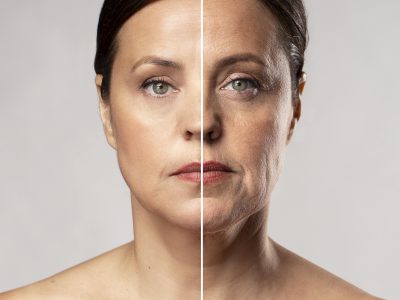Treatment Detail
Botox, short for Botulinum Toxin, is a neurotoxic protein produced by the bacterium Clostridium botulinum. In cosmetic procedures, Botox is commonly used to reduce the appearance of facial wrinkles and fine lines by temporarily paralyzing or relaxing the underlying muscles.
During a Botox treatment, a small amount of the toxin is injected into specific facial muscles using a fine needle. The toxin works by blocking the nerve signals that cause these muscles to contract, leading to a temporary reduction in muscle activity. As a result, wrinkles and lines in the treated areas become smoother and less noticeable.
Botox is most commonly used to treat wrinkles and lines on the forehead, between the eyebrows (frown lines), and around the eyes (crow’s feet). It can also be used for other cosmetic purposes, such as lifting the eyebrows or reducing the appearance of neck bands.
The effects of Botox typically last for three to four months, after which the treated muscles gradually regain their normal function, and wrinkles may begin to reappear. Repeat treatments are necessary to maintain the desired results.
While Botox is generally safe when administered by a qualified medical professional, it can have side effects such as bruising, swelling, or temporary drooping of the eyelid or eyebrow. Serious complications are rare but can occur if the toxin spreads beyond the injection site.
It’s essential to consult with a licensed healthcare provider, such as a dermatologist or plastic surgeon, to determine if Botox is a suitable option for addressing your specific cosmetic concerns and to ensure safe and effective treatment.

